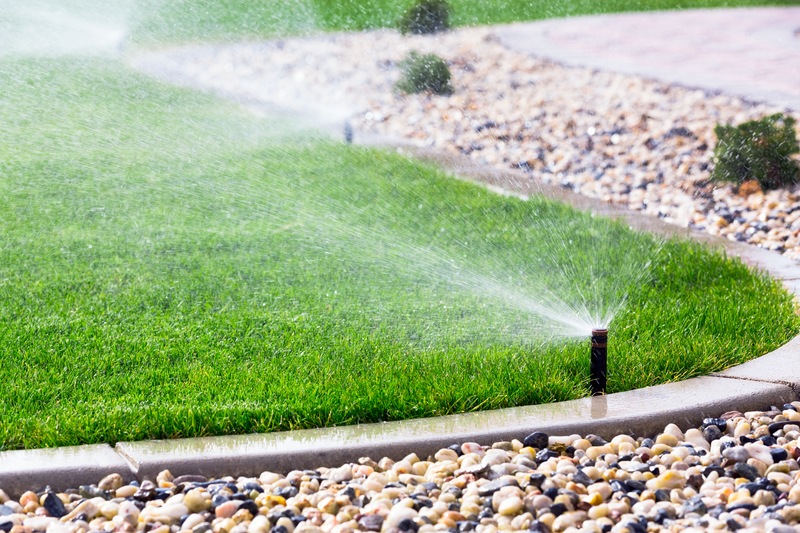Introduction
More than just a fad, sustainable landscaping creates stunning outdoor areas that respect and protect the environment. Whether you want to reorganize your garden or seek professional landscaping services, incorporating sustainability into your outdoor spaces is a step towards a healthier planet.
By adopting sustainable practices, you can reduce maintenance costs, support local biodiversity, and minimize your environmental footprint. With expert tips and actionable advice, transforming your garden into an evergreen oasis has never been easier. Beyond the environmental benefits, you’ll also create a haven for local wildlife, stabilize the soil, and improve air quality.
Benefits of Sustainable Landscaping
Sustainable landscaping services offer numerous benefits, from economic savings to environmental preservation. Reducing water usage, minimizing chemical inputs, and enhancing local biodiversity can lead to a more resilient and self-sufficient garden. Moreover, sustainable practices can reduce greenhouse gas emissions by minimizing the need for synthetic fertilizers and pesticides. The Environmental Protection Agency (EPA) claims that conventional lawn care methods greatly increase air and water pollution.
Additionally, sustainably managed gardens can attract beneficial wildlife, such as pollinators and birds, which further contribute to the health of your garden and the broader ecosystem. Inviting such biodiversity helps in natural pest control and enhances the aesthetic appeal of your garden. Ultimately, sustainable landscaping creates a healthier living environment for humans and wildlife.
Choosing the Right Plants
Making the correct plant choices is essential to creating a sustainable environment. Opt for species that thrive in local climates and require minimal water and maintenance. Using native plants can enhance ecological balance, as they are well-adapted to the local environment and support native wildlife. These plants require fewer resources and are less susceptible to pests and diseases commonly found in non-native species.
Consult resources like the USDA Plant Hardiness Zones map to determine the best plants for your area. Choosing drought-resistant plants can also be beneficial, especially in areas prone to water scarcity. Succulents, ornamental grasses, and certain perennials are excellent choices for creating a low-maintenance, eco-friendly garden.
Eco-Friendly Lawn Care
Traditional lawn care practices can harm the environment due to excessive water use, fertilizers, and pesticides. Consider switching to organic fertilizers and exploring alternatives to conventional mowing. Electric or manual reel mowers can be excellent eco-friendly choices that reduce air and noise pollution. Moreover, these alternatives are often lighter and easier to maneuver, making lawn care simpler.
Additionally, allowing sections of your lawn to go natural and grow wild can provide habitat for local wildlife while reducing maintenance efforts. Creating wildflower meadows or prairie sections within your lawn can introduce diverse plant species, attracting pollinators and other beneficial insects. These efforts can transform your lawn into a dynamic ecosystem teeming with life.
Utilizing Native Plants
Incorporating native plants into your landscape design is a smart way to promote sustainability. Native plants are adapted to local soil types and climate conditions, making them more resilient and less reliant on additional watering and fertilizers. They also play a vital role in supporting local biodiversity by providing habitat and food sources for native wildlife, including birds, butterflies, and other pollinators.
Contact local extension services or native plant societies to learn more about the best native plant species for your area. This will ensure that your garden is sustainable but also vibrant and thriving. Furthermore, native plants often require less maintenance, reducing the time and effort needed to keep your garden looking its best. Utilizing natives can offer aesthetic appeal and ecological benefits, creating a harmonious and sustainable landscape.
Composting and Soil Health
Composting is one of the best ways to enhance soil health and reduce waste. By recycling organic matter, such as kitchen scraps and yard waste, you can create nutrient-rich compost for your garden. Compost improves soil structure, increases moisture retention, and provides essential nutrients that promote healthy plant growth. Well-composted soil supports more vigorous plant growth and increases the biodiversity of soil organisms.
For more tips and techniques on composting, check out the EPA’s Guide to Composting. Composting benefits your garden and helps reduce landfill waste, making it a win-win solution for your garden and the environment. Regularly adding compost to your soil can enhance its fertility, reducing the need for synthetic fertilizers and fostering a thriving garden ecosystem.
Reducing Pesticides and Fertilizers
Overusing fertilizers and pesticides can harm the surrounding ecosystem and wildlife. To maintain a healthy garden ecosystem, consider adopting integrated pest management (IPM) techniques. IPM involves using biological, cultural, and mechanical methods to control pests while minimizing chemical inputs. Techniques such as crop rotation, introducing natural predators, and utilizing pest-resistant plant varieties are effective components of IPM.
Organic fertilizers, such as compost and natural amendments, can provide the necessary nutrients for your plants without the adverse environmental impacts associated with synthetic fertilizers. Using natural fertilizers reduces the risk of runoff pollution, which can contaminate local waterways. Reducing chemical use can create a safer and healthier outdoor environment for you, your family, and local wildlife.
Conclusion
Creating a sustainable landscape requires thoughtfulness and effort, but the rewards are immense. Not only will you enjoy a beautiful and thriving garden, but you will also contribute positively to the environment. Sustainable landscapes conserve resources, support biodiversity, and create healthier living spaces for everyone. Sustainable practices often lead to lower maintenance costs and a more resilient garden capable of withstanding environmental stressors.





